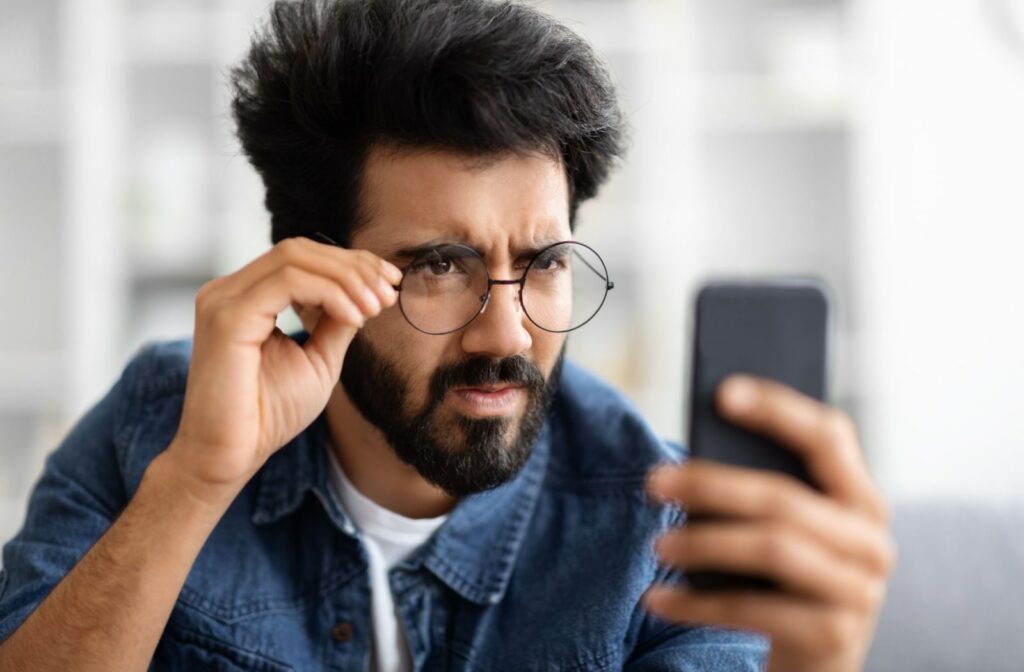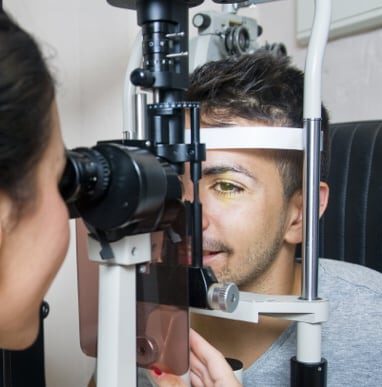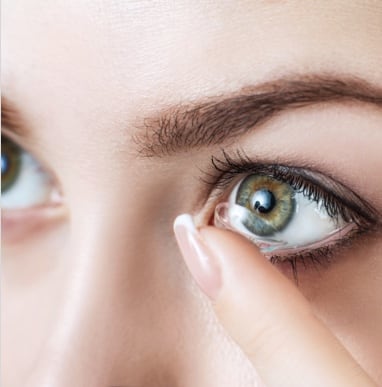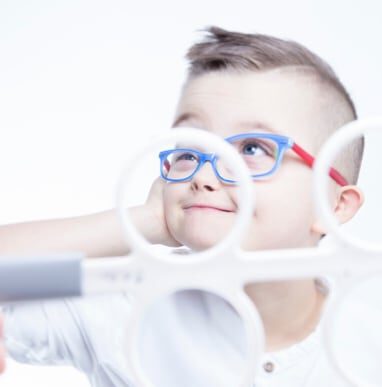Binocular vision dysfunction is when the eyes struggle to work together, leading to visual discomfort and various symptoms. The eyes with binocular vision dysfunction may have difficulty coordinating their movements, focusing, and aligning to form a single image.
Your eye doctor can assess and diagnose vision problems such as binocular vision dysfunction. Vision therapy treatment can help adults and children with binocular vision dysfunction improve their visual skills.
What Is Binocular Vision Dysfunction (BVD)?
Unlike other vision issues that deal primarily with clarity of sight, BVD focuses on the alignment and coordination of the eyes. Binocular vision dysfunction is a condition where the eyes find it challenging to align, resulting in a constant struggle to maintain a single, cohesive image.
Imagine the effort it would take to constantly align two misaligned cameras to produce a single clear picture; this effort closely mirrors the daily reality of someone with BVD.
Binocular vision problems can include the following:
- Convergence Insufficiency: A problem with eye teaming where the eyes point outward during near-focused work.
- Convergence Excess: A problem with eye teaming where the eyes point inward during near-focused work.
Binocular Vision Dysfunction Symptoms
Common visual symptoms of binocular vision dysfunction can include:
- Headaches
- Blurry vision
- Double vision
- Eye strain
- Lack of focus and concentration
- Light sensitivity
- Difficulty reading
- Poor depth perception
Physical symptoms of binocular vision dysfunction can include:
- Lightheadedness
- Dizziness
- Nausea
- Frequent headaches
- Neck, shoulder, and back pain
- Head tilting
- Difficulty walking in a straight line
- Bumping into things
- Difficulties with balance
- Motion sickness
- Sinus pressure
The Causes of Binocular Vision Dysfunction
Eye misalignment usually develops in childhood, however, detection may only happen in adulthood. Misalignment can also develop in adulthood. Other causes of binocular vision dysfunction can include the following:
- Traumatic head injuries such as concussion, stroke, and brain injury
- Environmental stress on the visual system
- Vision development errors
- Congenital or development issues from birth
Diagnosing Binocular Vision Dysfunction
BVD symptoms can resemble other conditions and be mistaken or misdiagnosed for the following:
- ADHD
- Dyslexia
- Developmental and learning disorders
- Migraine
- Chronic fatigue syndrome
- Anxiety
Diagnosing BVD involves a series of tests performed by an optometrist, including but not limited to vision assessments and specialized equipment designed to measure binocular vision capabilities. Adults and children can also complete a binocular vision dysfunction questionnaire for more insight into their vision concerns.

The Impact of BVD on Different Age Groups
For young learners, BVD can be particularly challenging. It can affect their ability to read and learn effectively and also impact their coordination and sports performance, crucial aspects of their development and self-esteem.
BVD in adults may lead to difficulties concentrating, especially on tasks requiring sustained visual focus, like computer use. It can also affect job performance and, by extension, quality of life.
Treatment Options for BVD
BVD is treatable. Treatments can range from corrective lenses and prisms to specialized options like vision therapy. Besides these, your eye doctor may also use filters and other tools. Based on your individual needs, they can set goals, measure your progress, and adjust your treatment plan as needed.
Corrective Lenses
Initial treatment may include corrective lenses such as eyeglasses or contact lenses prescribed to correct refractive errors.
Prism Lenses
Prism lenses built into glasses, or prism glasses, such as Neurolens, are contoured prism lenses that correct eye misalignment. They help light entering the eyes refract on both retinas at the same spot even though the eyes don’t align, providing a clear single image. Prism glasses can also reduce headaches and prevent the following:
- Double vision
- Eyestrain
- Reading difficulties
Vision Therapy
Vision therapy is not self-directed eye exercises but a series of personalized programs performed under your eye doctor’s supervision. Vision therapy aims at improving the brain’s processing of visual information and vital visual skills, such as:
- Eye movement and muscle control
- Controlling focusing distance
- Hand-eye coordination
- Depth perception
- Spacial awareness
Learning to Thrive with BVD
While living with BVD can present challenges, it doesn’t have to define your life. With a proper diagnosis and treatment program, individuals can learn to thrive despite their condition. Vision therapy can benefit adults and children with binocular vision dysfunction.
For children, vision therapy can help preserve eyesight and improve performance at school. For adults, vision therapy can restore vision affected by impairment and improve performance. It’s crucial for those struggling with BVD to seek support from their eye doctor to navigate their everyday lives successfully.
Improving Vision Comfort & Quality
Understanding and being aware of the symptoms of binocular vision dysfunction is crucial for the well-being of those affected by this condition. With proper diagnosis and treatment, individuals with BVD can learn to manage their symptoms and live fulfilling lives.
Whether you or your child has vision problems in everyday life, book an appointment with Vision Care Center to assess your or their visual system for signs of binocular vision dysfunction and learn more about how vision therapy can improve vision comfort and quality.












